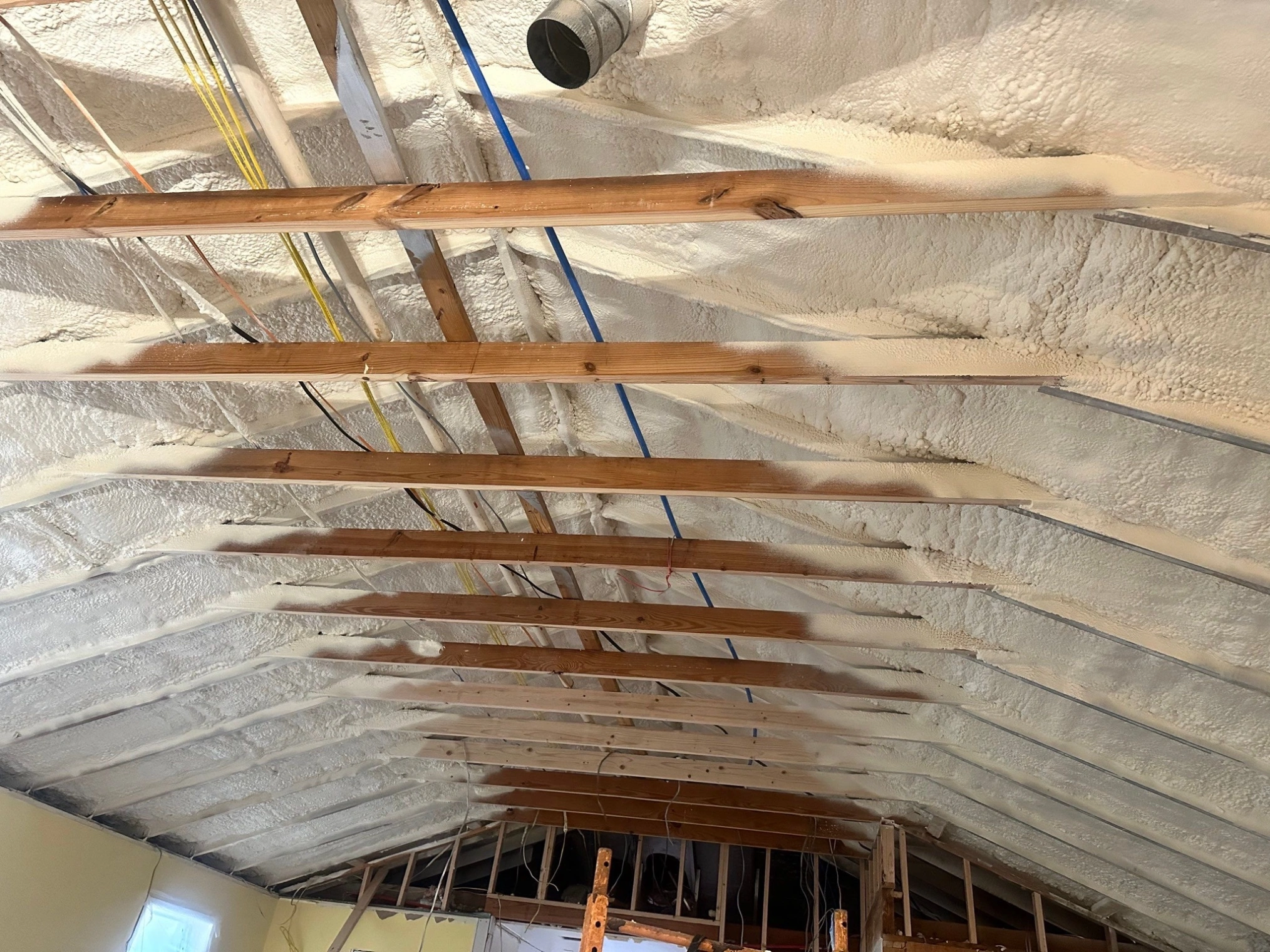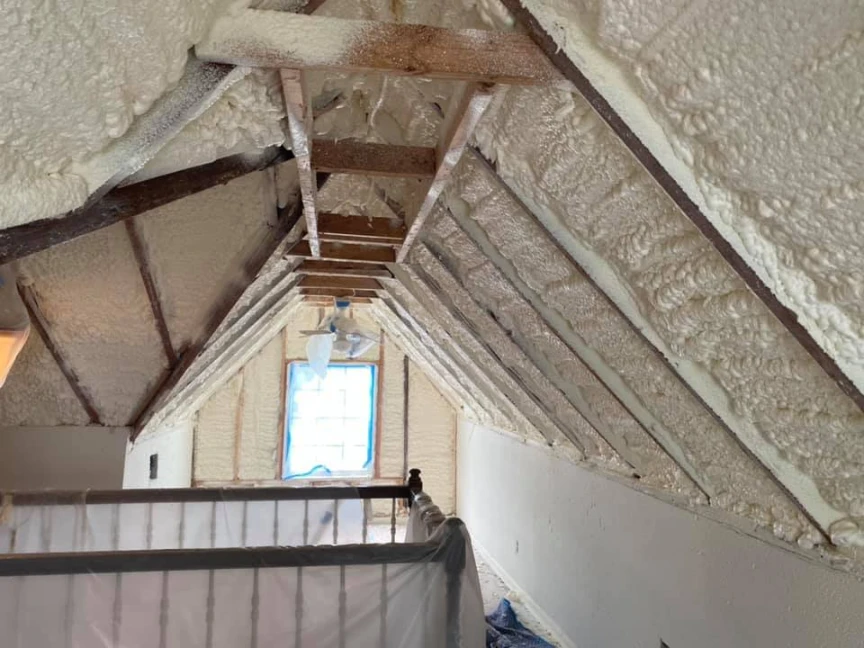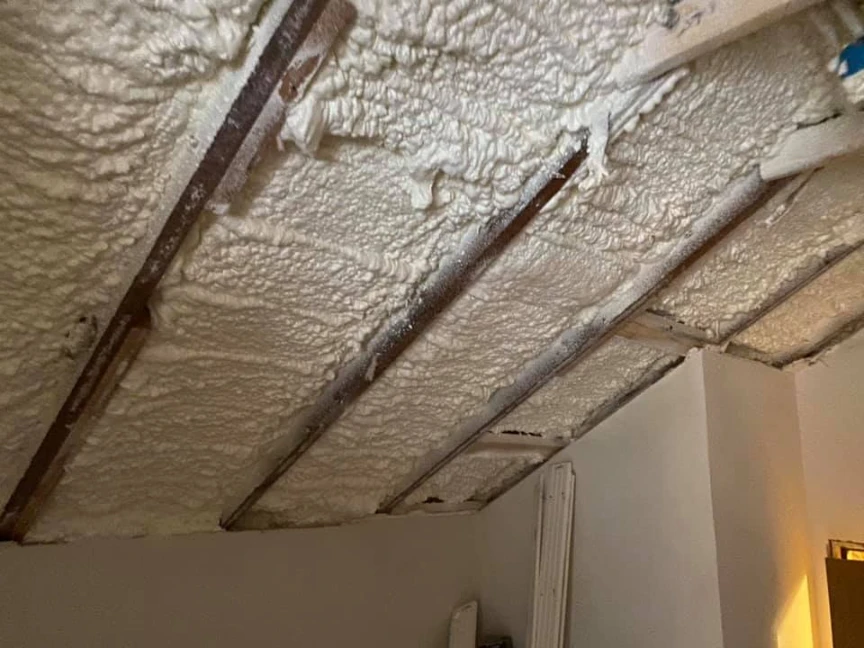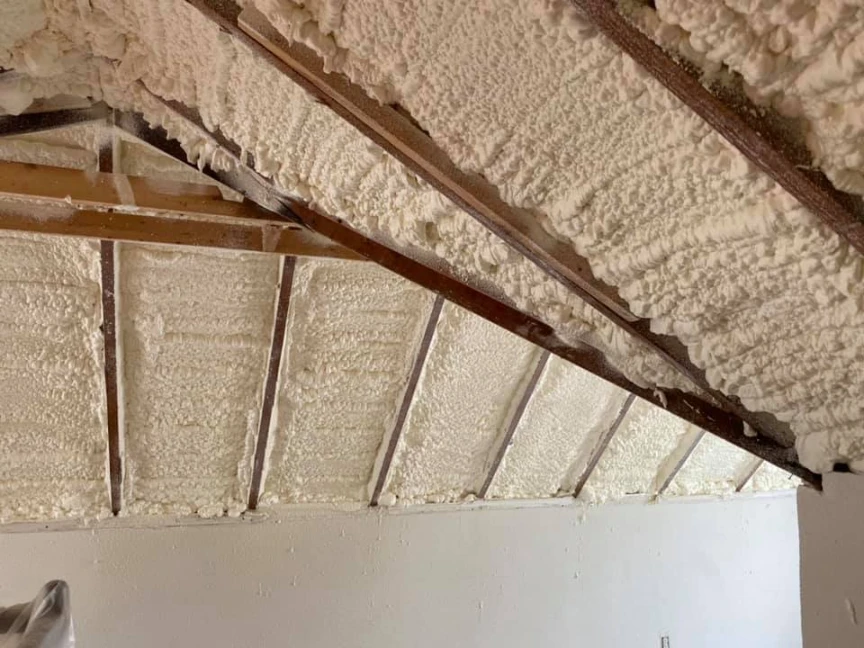Leander’s humid subtropical climate, characterized by hot summers reaching 95°F+ and mild winters with occasional freezes, creates specific thermal performance requirements that directly influence spray foam insulation selection. Open-cell spray foam typically performs adequately for most residential applications, while closed-cell spray foam becomes essential for areas experiencing high moisture exposure or requiring maximum thermal resistance.
The region’s significant temperature fluctuations between seasons, combined with humidity levels averaging 65-75%, demand insulation materials that provide consistent thermal barriers while managing moisture intrusion. Professional installers must account for Leander’s specific weather patterns when determining foam density, thickness, and application methods to ensure optimal long-term performance. Based on extensive installation experience across Central Texas, climate considerations fundamentally determine insulation effectiveness and building energy efficiency.
Understanding Leander’s Climate Challenges
Leander, TX experiences distinct seasonal variations that create unique insulation demands throughout the year. Summer temperatures frequently exceed 95°F with heat indices reaching 105°F+, while winter lows can drop to 25-30°F during periodic cold fronts. This 70-degree temperature swing places continuous stress on building envelopes.
Humidity presents another critical factor. Spring and fall months maintain relative humidity between 70-80%, creating condensation risks within wall cavities and attic spaces. Summer humidity, though slightly lower at 60-65%, combines with extreme heat to create challenging installation conditions and long-term performance requirements.
According to the National Weather Service Austin office, Leander receives approximately 34 inches of annual precipitation, with intense storm events delivering 2-4 inches within short periods. These weather patterns necessitate moisture-resistant insulation solutions that maintain thermal properties under varying conditions.
Seasonal Performance Requirements
| Season | Temperature Range | Humidity Level | Primary Insulation Challenge |
|---|---|---|---|
| Summer | 75-98°F | 60-65% | Heat transfer prevention |
| Fall | 55-85°F | 70-80% | Moisture management |
| Winter | 25-65°F | 65-75% | Thermal retention |
| Spring | 60-90°F | 75-80% | Condensation control |
Open Cell vs Closed Cell Performance Analysis
Open-cell spray foam expands to create a lighter, more flexible barrier with R-values ranging from 3.5-4.0 per inch. This material allows limited moisture vapor transmission while providing effective thermal resistance for standard residential applications. Installation costs remain 20-30% lower than closed-cell alternatives.
Closed-cell spray foam delivers superior performance with R-values between 6.0-7.0 per inch while creating an impermeable moisture barrier. The denser material provides structural reinforcement and maintains thermal properties under extreme conditions. Higher material density results in increased installation costs but delivers enhanced long-term value.
Performance Comparison Table
| Property | Open Cell | Closed Cell |
|---|---|---|
| R-Value per inch | 3.5-4.0 | 6.0-7.0 |
| Density (lbs/ft³) | 0.4-0.6 | 1.5-2.0 |
| Moisture permeability | Semi-permeable | Impermeable |
| Structural strength | Minimal | Significant |
| Installation cost | Lower | Higher |
| Vapor barrier needed | Yes | No |
Climate-specific installation experience reveals that open-cell foam performs well in Leander’s moderate climate zones, particularly interior walls and standard attic applications. Closed-cell foam becomes necessary for exterior walls, below-grade applications, and areas with direct moisture exposure.
Bonus Tip: Installation timing significantly impacts foam performance. Schedule applications during moderate temperature periods (65-85°F) with humidity below 70% to ensure proper curing and adhesion.
Regional Climate Impact on Installation Methods
Leander’s climate requires modified installation techniques compared to standard procedures used in other regions. High humidity periods demand extended curing times and proper ventilation during application. Summer heat affects foam expansion rates, requiring adjusted spray patterns and multiple pass techniques.
Seasonal temperature variations create expansion and contraction cycles that impact foam adhesion and long-term integrity. Professional installers must account for substrate temperatures and ambient conditions when determining spray thickness and application timing.
According to the Building Performance Institute, Central Texas installations show 15% better long-term performance when climate-specific techniques are employed versus standard application methods. This data emphasizes the importance of regional expertise in achieving optimal results.
Technical Specifications for Leander Climate
| Application Area | Recommended Type | Thickness | Special Considerations |
|---|---|---|---|
| Attic floors | Open cell | 10-14 inches | Vapor barrier required |
| Exterior walls | Closed cell | 2-4 inches | Direct thermal bridge |
| Crawl spaces | Closed cell | 3-6 inches | Moisture protection |
| Basement walls | Closed cell | 2-3 inches | Below-grade application |
Things to Consider Before Making a Decision
Building age and construction materials significantly influence insulation selection. Older homes with traditional framing may require closed-cell foam to address air leakage issues, while newer construction with improved building envelopes may perform adequately with open-cell applications.
Budget considerations extend beyond initial installation costs. Open-cell foam requires additional vapor barriers and potential HVAC adjustments, while closed-cell foam provides comprehensive thermal and moisture protection in single applications. Calculate total system costs including complementary materials and modifications.
Existing insulation conditions affect installation requirements. Complete removal of deteriorated materials may be necessary before foam application, adding project complexity and costs. Professional assessment determines whether partial or complete replacement provides optimal value.
Future renovation plans should influence current insulation decisions. Closed-cell foam creates permanent installations that resist removal, while open-cell applications allow easier access for electrical or plumbing modifications.
Bonus Tip: Schedule energy audits before and after installation to quantify performance improvements. Thermal imaging during extreme weather conditions reveals insulation effectiveness and identifies potential issues.
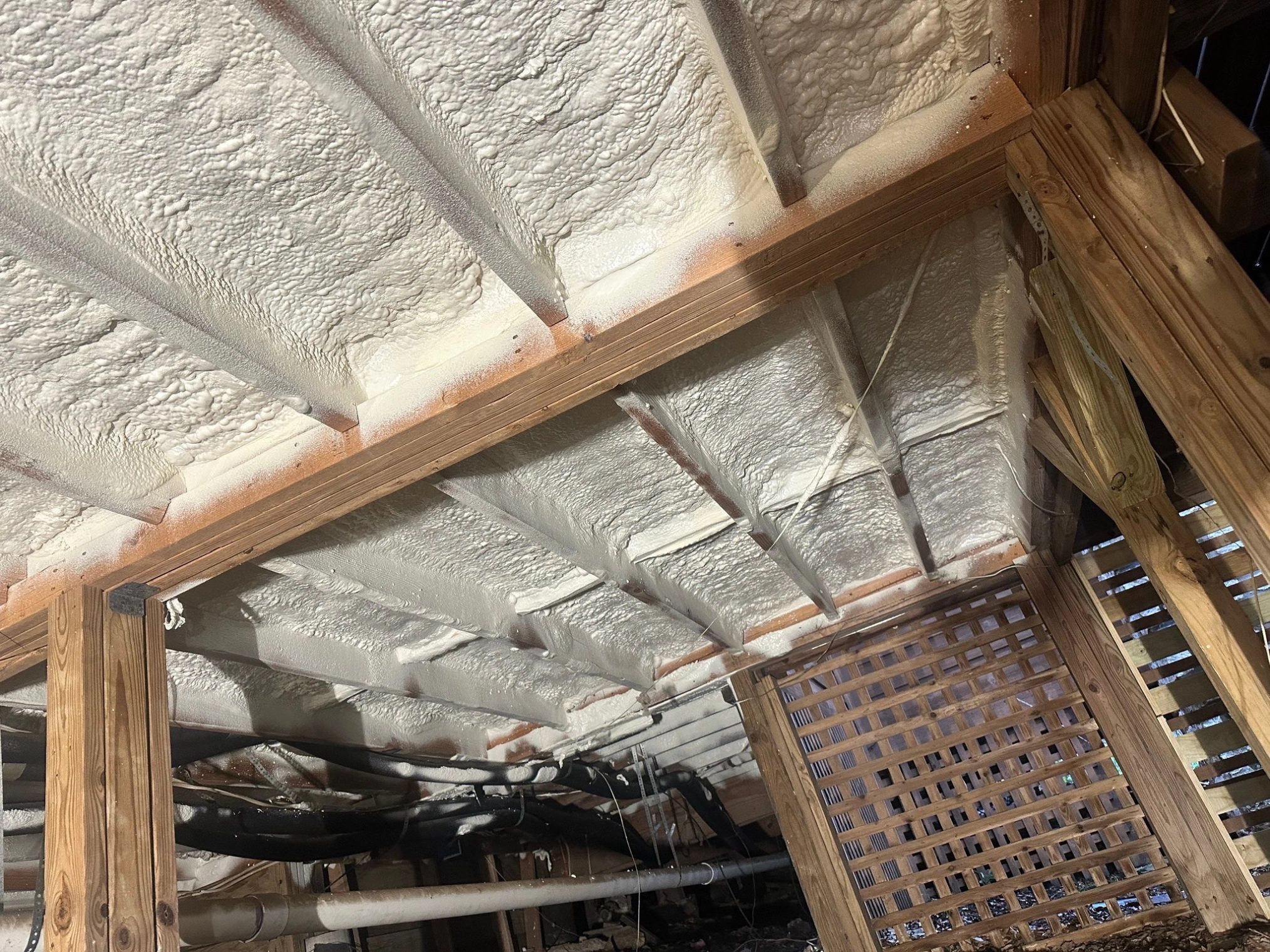
Moisture Management in Humid Conditions
Leander’s humidity levels create condensation risks within building envelopes, particularly during temperature transition periods. Proper moisture management prevents mold growth, structural damage, and insulation degradation over time.
Open-cell foam allows controlled moisture vapor transmission, requiring coordinated vapor barrier placement to prevent condensation within wall assemblies. Closed-cell foam eliminates vapor transmission concerns but may trap existing moisture if applied over wet substrates.
Ventilation systems must accommodate insulation choices to maintain proper indoor air quality and humidity control. Sealed building envelopes created by spray foam require mechanical ventilation to prevent moisture accumulation and ensure adequate air exchange.
Professional Services Stellrr Insulation & Spray Foam Delivers
Residential Spray Foam Insulation
Complete home insulation solutions using climate-appropriate foam formulations designed for Central Texas conditions. Professional installation ensures proper coverage and long-term performance.
Commercial Spray Foam Insulation
Large-scale applications for commercial buildings requiring enhanced thermal performance and moisture control. Experienced crews handle complex installations with minimal business disruption.
Attic Insulation
Specialized attic applications addressing Leander’s extreme summer heat conditions. Proper thickness and ventilation coordination maximize cooling efficiency and reduce energy costs.
Crawl Space Insulation
Moisture-resistant solutions for below-grade applications where humidity control becomes critical. Closed-cell foam prevents moisture intrusion and maintains structural integrity.
Bonus Tip: Professional installers should provide thermal imaging documentation showing complete coverage and identifying any gaps or thin areas requiring attention.
Making the Right Choice for Your Property
Leander’s climate demands insulation solutions that address both thermal performance and moisture management effectively. Open-cell foam provides cost-effective thermal resistance for standard applications, while closed-cell foam delivers comprehensive protection for challenging environments.
Professional assessment considers building characteristics, budget constraints, and long-term performance requirements to determine optimal solutions. Climate-specific installation techniques ensure maximum effectiveness and longevity regardless of foam type selected.
Evaluate your property’s specific needs, existing conditions, and performance goals when selecting insulation materials. Consider both immediate installation costs and long-term energy savings to determine the most valuable approach for your situation.
Common Questions About Spray Foam Selection
Which foam type works best for Leander’s summer heat?
Both open and closed-cell foam provide effective thermal resistance, but closed-cell foam offers superior performance in extreme heat conditions due to higher R-values per inch and better structural integrity under temperature stress.
How does humidity affect foam installation timing?
High humidity extends curing times and can affect foam adhesion. Schedule installations during periods with relative humidity below 70% and avoid application during active weather systems.
Can spray foam handle Leander’s temperature fluctuations?
Quality spray foam maintains flexibility through normal temperature cycles. Proper installation techniques and appropriate foam selection ensure long-term performance despite seasonal variations.
What thickness provides adequate protection?
Attic applications typically require 10-14 inches of open-cell or 6-8 inches of closed-cell foam. Wall applications need 2-4 inches depending on construction type and performance requirements.
Get Expert Insulation Guidance
Choosing the right spray foam insulation for Leander’s unique climate requires professional expertise and local installation experience. Climate-appropriate material selection and proper application techniques ensure optimal thermal performance and long-term value.
Contact Stellrr Insulation & Spray Foam for comprehensive property assessments and customized insulation solutions designed for Central Texas conditions. Professional installation teams provide quality workmanship backed by industry experience and regional climate knowledge.
Phone: (512) 710-2839
Email: info@stellrr.com
Schedule your consultation to discuss specific property requirements and receive detailed recommendations for achieving maximum energy efficiency and comfort in Leander’s challenging climate conditions.
Frequently Asked Questions
Does spray foam insulation work effectively in Texas heat?
Spray foam performs exceptionally well in hot climates by creating continuous thermal barriers that prevent heat transfer. Closed-cell foam provides superior performance in extreme conditions, while open-cell foam offers adequate protection for most residential applications at lower costs.
How long does spray foam last in humid climates like Leander?
Quality spray foam installations maintain effectiveness for 50+ years when properly applied. Humidity affects installation conditions but does not impact long-term performance when appropriate foam types and installation techniques are used.
Will spray foam cause moisture problems in my home?
Properly installed spray foam prevents moisture problems by eliminating air leakage and providing controlled vapor transmission. Open-cell foam requires coordinated vapor barriers, while closed-cell foam creates complete moisture barriers. Adequate ventilation remains essential for indoor air quality.
Can I install spray foam insulation myself?
Professional installation ensures proper foam selection, application techniques, and safety protocols. DIY applications often result in inadequate coverage, incorrect foam types, and potential health hazards from improper chemical handling.
How much energy will spray foam save on cooling bills?
Energy savings typically range from 30-50% depending on existing insulation conditions and building characteristics. Closed-cell foam generally provides greater savings due to superior thermal performance and air sealing properties.


